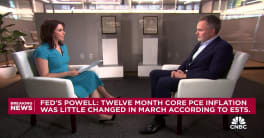Construction spending in November came in slightly above analysts' consensus for an increase of 0.6 percent. Overall expenditures for construction put in place during the month were at a seasonally adjusted annual rate of 1.257 trillion, a 0.8 percent gain from October and up 2.7 percent from November 2016. The October estimate was revised up from $1.242 trillion to $1.247 trillion.
On a non-adjusted basis, November spending totaled $105.8 billion, down from $112.9 billion in October. Year-to-date spending through November was estimated at $1.138 trillion, a 4.2 percent increase over the same period in 2016.
Spending on private construction projects rose 1.0 percent to a seasonally adjusted annual rate of $964.3 billion. This was ahead of the November 2016 pace by 2.6 percent. Spending for the year-to-date through November was up 6.5 percent from last year.
The rate of private spending on residential construction was also up 1.0 percent from October, to $530.8 billion, a 7.9 percent improvement over one year earlier. Spending on single family construction gained 1.9 percent to a rate of $274.1 billion, and was up 8.9 percent-over-year. Multi-family spending drove down the overall residential gains, dropping 1.3 percent from October and coming in 1.7 percent behind the rate the previous November.
On a non-adjusted basis, residential spending for the month amounted to 44.1 billion, $24.0 billion of which was for single-family construction. Year-to-date spending was $479.8 billion for all residential construction and $243.9 billion for single-family units. Those figures represented increases of 11.5 percent and 9.0 percent respectively.
Improvements in residential spending for the first 11 months of 2017 led all private sector categories except commercial, which was up 14.7 percent, and transportation, which even after an 11.1 percent gain, was next to last in dollars spent.
Total public-sector spending rose 0.2 percent from October to a seasonally adjusted $292.7 billion, 1.8 percent above the November 2016 number. There was a 5.1 percent increase for the month in residential spending, from $6.6 billion in October to $6.9 billion. That increase provided most of the year-over-year increase of 5.2 percent. Spending year-to-date totals $5.9 billion, a 3.2 percent decline from the first 11 months of 2016.







